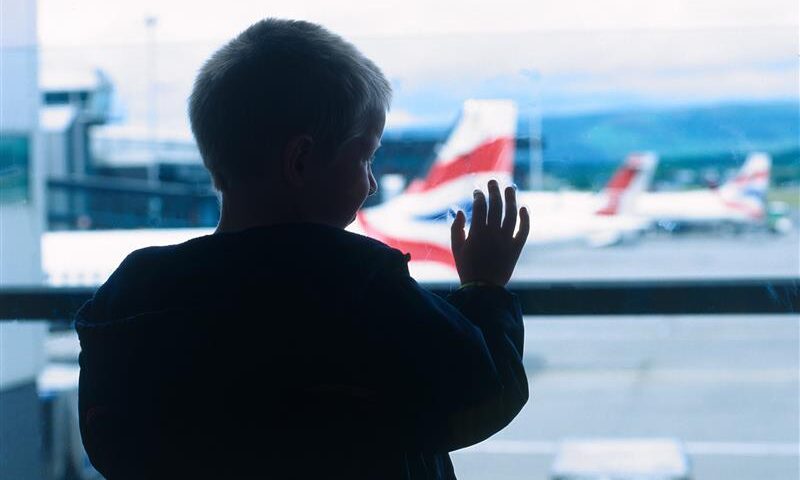
Imagine arriving at the airport for your next big adventure or business trip. From the moment you enter the airport grounds, innovative technologies are at work, transforming your journey into a seamless, efficient, and enjoyable experience. Let’s walk through this journey, exploring how these advancements impact every step of your travel.
Arrival at the Airport
Your journey begins as you drive to the airport. Finding a parking spot is often a stressful task, but not anymore. AI-powered smart parking solutions guide you to available spots, track parking durations, and facilitate cashless payments. Sensors and cameras integrated with IoT devices provide real-time updates on parking availability, directing you to the nearest open spot. This not only saves time but also reduces the stress of searching for parking.
Once parked, you hop onto an autonomous shuttle that transports you from the parking area to the terminal. These self-driving vehicles, equipped with advanced sensors and AI algorithms, navigate complex environments, ensuring a safe and efficient ride. For example, New York’s JFK Airport (JFK) has introduced a self-driving shuttle service that transports passengers from Parking Lot 9 to the AirTrain, reducing reliance on traditional shuttle services and minimizing carbon emissions.
Check-in and Baggage Handling
Upon entering the terminal, AI-powered self-service kiosks and facial recognition systems streamline the check-in process by verifying identity quickly and accurately. These technologies enable passengers to print boarding passes and tag luggage without human assistance, reducing wait times and enhancing security. An emerging solution being tested in various countries involves a mobile-enabled system that pre-verifies and matches the passenger’s e-passport photo with a live facial image taken on their device, allowing for seamless and expedited global cross-border passenger processing.
At the baggage drop-off, automated systems take over. You place your luggage on a conveyor belt, where it is tagged and sent to the appropriate destination. AI-enabled systems provide real-time tracking, letting you monitor your luggage throughout your journey. In case of mishandled luggage, automated re-flighting systems identify alternative routes, ensuring your bags reach their destination promptly.
The landscape of baggage handling in airports is undergoing a significant transformation, driven by AI and robotics to enhance efficiency, reliability, and the passenger experience. Some airports are already implementing Smart Baggage Handling Systems using RFID tags and IoT technology to track luggage in real-time, significantly reducing misplaced bags. Robotics also play a crucial role, with systems like Bagload ensuring efficient and accurate placement of bags onto conveyors or into containers. Automated Guided Vehicles (AGVs) transport luggage seamlessly across various points within the airport, reducing the time and labor involved in manual handling.
Security Screening
Next, you proceed to the security screening, often considered the most stressful part of air travel. However, innovative technologies are transforming this experience. Biometric identification systems, including facial recognition and fingerprint scanning, verify your identity quickly and accurately. This reduces the need for manual checks and speeds up the screening process.
Advanced 3D imaging technology and generative AI algorithms are improving the accuracy and efficiency of the security screening process by providing detailed views of baggage contents, which can be used to identify threats more accurately. Passengers no longer need to remove liquids and electronic devices from their carry-on bags, making the process faster and more convenient.
Pre-booked security timeslots are another innovative approach, allowing passengers to reserve a specific time for their security screening. This system aims to reduce wait times, enhance passenger convenience, and improve overall airport efficiency.
Why not a “self-service” security screening? This innovative solution is currently being tested under the Department of Homeland Security’s Science and Technology Directorate (DHS S&T) “Screening at Speed Program”, which is starting to provide a dramatic reduction in wait times. The solution features a video-monitored, multi-step self-service, self-sufficient and self-resolution passenger security screening process that minimizes secondary and manual screening procedures with TSA agents while improving human decision-making.
Wayfinding and Navigation
With security behind you, it’s time to navigate the terminal. Airports can be confusing, but augmented reality (AR) navigation apps make it easier. These apps overlay digital information onto your smartphone screen, providing real-time directions, flight updates, and other essential information. This reduces the stress of finding your way and helps you move quickly through the terminal
Indoor sensor positioning systems use Bluetooth beacons and Wi-Fi signals to provide precise location data, guiding you to your gate, baggage carousels, and check-in counters. Virtual guides offer pre-trip planning, helping you understand what to expect at each stage of your journey and relieving stress when connecting at large airports.
Airports are also adopting various technologies to ensure all passengers, including those with disabilities, can navigate comfortably, and independently introducing, for example, autonomous power chairs to assist passengers with limited mobility, enhancing accessibility and modernizing the customer experience.
In-Terminal Dwell Time
Continuing with your journey across the terminal, hopefully you have some time to relax before your flight. AI-enabled information kiosks provide real-time, personalized assistance, including flight information, gate changes, wayfinding and security wait times. These kiosks reduce reliance on human staff, allowing personnel to focus on more complex tasks.
To improve navigation and comfort, People Flow Monitoring technologies such as LiDAR (Light Detection and Ranging) applications in airport terminals have become increasingly important, demonstrating improvements in operational efficiency, passenger experience, and security. With the increase in passenger volumes, advanced systems to manage and optimize the flow of people have become necessary. These systems offer real-time data on passenger density, queue lengths, and wait times. Intelligent video analytics further enhance this data by identifying patterns and predicting congestion points. Dalaman Airport (DLM) in Turkey, with assistance from Ferrovial Innovation and Ferrovial Airports, recently implemented this technology to showcase the potential of these technologies and their impact on the passenger experience.
In South Korea there are already robotic assistants roaming the terminal, helping passengers with tasks like carrying luggage, providing directions, and delivering food and beverages. These robots enhance convenience and reduce wait times at various checkpoints.
AI analyzes passenger data to offer personalized shopping and dining recommendations, sending special offers directly to your device as you move through the airport. For a more immersive experience, some airports offer virtual reality (VR) lounges. These lounges provide VR entertainment, including virtual travel experiences and 3D cinema, making your wait time more enjoyable.
In an effort to stand out from the crowd, some airports are increasingly integrating large-scale multimedia technologies to enhance the passenger experience. Architecturally integrated digital displays create a sense of place and provide a memorable experience. These displays can show everything from flight information or promote products and offers, to engaging content that reflects the local culture and environment.
Transparent displays are another innovative feature, blending seamlessly into the surrounding environment when not in use. Multi-Use Flight Information Displays (MUFIDs) are also becoming more common, providing passengers with real-time updates on flights, gate changes, and other essential information.
To address accessibility needs and improve communication for passengers with disabilities, AI-driven systems deliver real-time boarding announcements and updates to their mobile devices. These systems ensure passengers are well-informed and able to board their flights promptly. Utilizing AI, these technologies generate synthetic speech using digital fragments of actual voices, creating announcements that sound as human as possible.
Exiting the Airport
After a smooth flight, you arrive at your destination. Going through border and passport control can mean long lines, but biometric technology streamlines the entry process, with facial recognition systems automating manual document checks. This reduces the need for physical touchpoints and expedites the entry process.
Looking ahead, innovations such as “biometrics on the go”, “non-stationary biometrics” or “in-motion biometric identification” are set to further revolutionize the travel experience. This concept involves the use of mobile biometric technology that allows travelers to be verified without stopping at a kiosk. Instead, biometric data can be captured as passengers move through the passport control area, providing a seamless and uninterrupted travel experience.
Once at the baggage collection hall, automated systems deliver your luggage directly to designated points, reducing congestion around carousels. Enhanced communication systems provide real-time updates on the status of your luggage, helping you plan your time better and reducing anxiety about lost or delayed bags. Baggage claim robots assist in locating and retrieving your luggage efficiently, making the process more user-friendly.
Finally, you are outside the terminal and decide to take a taxi or ride-hailing car. As you approach the curbside, different curbside management technologies come into play. Traffic cameras and LiDAR systems manage the flow of vehicles, ensuring a smooth pick-up experience. Real-time data analytics help optimize the use of space, preventing bottlenecks and enhancing overall traffic flow.
In this line, a groundbreaking innovation in curbside management is the concept of the passenger-driver “perfect match” and “express match” developed by Uber that some airports are already implementing. This approach involves the dynamic and immediate passenger-rider match and assignment of a curbside pick-up area, significantly increasing efficiency, reducing congestion and providing a safer passenger experience.
A further improvement to this solution would involve using real-time data, advanced algorithms and LiDAR technology to assign specific slots at the Pick-Up and Drop-Off (PUDO) area to both driver and rider based on their arrival time, passenger location, and live curbside or parking slot occupancy. When a passenger books a ride through a mobile app, the system calculates the optimal pick-up time and location, ensuring that the vehicle arrives at the designated slot just as the passenger is ready to be picked up.
The integration of breakthrough technologies in airports is dramatically transforming the aviation landscape, setting new benchmarks for efficiency, security, and passenger satisfaction. From smart parking solutions and autonomous shuttles to biometric identification and AI-enabled information kiosks, these innovations enhance every step of the passenger journey. As these technologies continue to evolve, the future of air travel promises to be even more seamless, efficient, and enjoyable.





There are no comments yet